How to Can Fresh Black Beans
Learn how to can fresh black beans, using a pressure canner and shell-out beans from your garden!

Black beans are very easy to grow at home. In fact, we grow ours using nothing more than a bag of store bought dried black beans as seeds, and a few tilled rows in the garden.
While you can let the shells dry on the vine, and harvest them for dried beans, if you’ve never tried canning (or eating) them at shell out stage, you’re missing a treat!
This article covers how to can fresh black beans.

If you’re interested in canning other types of beans, check out our articles:
You can also use these same instructions to pressure can navy beans, great Northern beans, etc. Plus, you can also mix and match beans in the same jar, since they share the exact same processing times!
If you’re looking for info on preserving green beans (string beans, wax beans), those are canned differently We’ll have a future article about How to Can Green Beans & Wax Beans, hopefully soon!

How & When to Harvest Black Beans
For pressure canning, you will need to pick your black beans at “shell-out” stage. This is also sometimes referred to as shelling beans, or shelly beans.

Shell Out Stage
At this stage, the outer beans pods have turned yellow and feel pliable or leathery. For black beans, you’ll usually notice some purple mottling or markings on the shells to indicate they’re ready, but sometimes a green one with really plump feeling beans inside might be ready too.
Inside of the perfect shell out bean, you should see purple or dark purple-black beans. If the bean is a really light purple color, it could’ve used a little more time, but it’s fine to use for canning too.

Immature (Green), or Dried Bean Stages
Very green pods with small, immature beans inside aren’t ready for shell out bean purposes, but they can be cooked and eaten similar to a green bean.
Crunchy and dried bean shells with hard black beans inside are past the shell-out stage and have to be handled differently. (They need soaking and rehydrating before canning.) So save these hard, dried beans for different purposes, or soak and cook them just like you would store-bought beans.

Sorting & Storing the Bean Harvest
As you harvest beans from your garden, leave the green ones on the vine, put the yellow/purple pliable ones into one bucket, and dried/crunchy ones into a separate bucket.
Alternatively, you can leave the dried beans on the vine to collect later, just don’t wait too long or they can mold or get bug damage.
Once inside, you can refrigerate the pods for around 2 or 3 days, if you don’t have time to shell them yet. Keeping them tied up in a plastic grocery bag will help them stay fresh.
After they’ve been shelled, you can store those shelled beans for another day or two in a sealed storage container in your fridge, but don’t wash them until right before you’re ready to can.

Shelling Beans – Time & Considerations
When you’re shelling beans, keep an eye out for any with brown spots, or that are shriveled or moldy. Those should be tossed – you don’t want them in your canned goods!
I’ll be honest – shelling black beans is not a fast process! Queue up some shows or movies to watch, get your family members to pitch in if possible, and be prepared to spend several hours working on beans.

How Many Beans Per Jar?
A very rough rule of thumb I keep in mind for black beans is that about 6 1/2 pounds of black beans in the shell will yield about 5 pints of canned beans.
This really will vary depending on the season – the first picking will usually have a higher amount of good beans, while last pickings might have more bug bites and damage, so the yield is lower.
Another way to calculate how many jars you need, is to estimate that you’ll want to have one pint jar ready for every 1 1/3 cups of shelled black beans you have.
So if you have 4 cups of fresh, raw shelled beans, that amount should roughly yield about 3 pints jars of canned beans.

Canning Black Beans Recipe – with FRESH beans
Standard, modern safe canning practice is that you must use a pressure canner to can fresh black beans – or any kind of beans for that matter. Because they’re a low acid food and are very dense, beans require a long pressure canning time to ensure a safe product.
* Do not use an Instant Pot, pressure COOKER (you want a CANNER), or water bath canner for canning beans.
**Before You Begin**
If you’re new to pressure canning, or just need to refresh your memory, stop right here and go read the National Center for Home Food Preservation’s guide to Using Pressure Canners.
Also read through your entire pressure canner’s manual to make sure you’re completely knowledgeable and aware of how pressure canning works.

Ingredients & Supplies You’ll Need:
- shelled black beans (they will be shades of purple to purple-black)
- salt (1/2 tsp pints, 1 tsp quarts)
- a pot for boiling the beans
- a second pot of boiling water, to fill the jars
- a heatproof mesh strainer
- a pressure canner (make sure it’s a canner, not a cooker)
- pint or quart jars with lids, rings
- a jar lifter, for handling hot jars
- a wide mouthed funnel, for filling jars
- a non-metallic chopstick or skewer, for removing air bubbles
- a soft cloth or paper towel, to wipe rims
- a towel, to place jars on

Instructions for Canning Black Beans:
Before you’re ready to can, prepare the pressure canner by filling it with 2 to 3 inches of water. (This equals 3 quarts of water for our pressure canner, but look at your canner’s booklet for specific advice.)
Since we have hard water, we also add 2 tablespoons white vinegar to the canner to prevent hard water deposits and discoloration of the inner surface.
Wash or rinse your jars and fill them about one-third way to half-way with extra water, then place them down in the pressure canner. This is the method we use to keep the jars perfectly hot for filling. Alternatively, you could run the jars through a hot cycle of your dishwasher and keep them hot.

Since you’re pressure cooking over 15 minutes, you don’t have to worry about sterilizing jars, but they should be clean and free of any nicks or cracks.
Rinse the shelled black beans with cold running water.
Bring a large pot of water to a boil, then add the beans to the pot. Return to a boil, then boil for 3 minutes. At this point – remove from heat, cover the pot, and soak the beans for one hour. (The way I initially learned to can fresh beans the “old timer way”, we didn’t soak for one hour after boiling, but if you’re concerned about phytic acid, this is the place to soak your beans.)
Place the canner on a burner and turn to medium, so the water and the jars can start heating up.
Drain the beans, and discard the cooking/soaking water. Rinse the beans lightly with fresh water.
Remove the hot jars from the pressure canner and tip the extra water from each jar out into the sink. That water was only needed to keep the jars hot, and shouldn’t be dumped into the pressure canner.
Put the salt in the bottom of each jar, so you won’t forget! The recommended amount is 1/2 teaspoon salt per pint, or 1 teaspoon salt per quart.

Add the beans to the jar, making sure that you allow for a lot of headspace. Only fill the beans up to the shoulder area of the jar, since they will expand quite a bit!
Use a measuring cup or slotted spoon to scoop the hot beans into the jar. Don’t pack the beans in or fill the jar too high; they will expand.
Add fresh boiling water in the jar, up to a 1 inch headspace, or right under the lowermost raised line on the jar top.

Use a chopstick or skewer to slide along the edges of the jar, to release any trapped air bubbles. Don’t plunge up and down vigorously, or you’ll add more bubbles.
Wipe the jar rim, then place the lids and rings on the jar. Tighten the rings to a comfortable tightness – similar to how you would put the top back on a jar of peanut butter. Not too loose, but not so tight that no one can open it!
Set the jars down in your pressure canner, tighten the lid into place, leaving the vent OPEN, and place the canner over high heat until the water boils and a steady stream of steam comes out of the vent pipe.

You must let the steam escape for 10 minutes first – this makes sure that no air is trapped in, and ensures the high temperatures needed for low acid and dense foods, like beans.
After 10 minutes of releasing steam, then you can place the weight on your canner and allow it to pressurize (or follow recommended manufacturer instructions for your device).
Process according the times and pressure below. Once finished, be sure to let the pressure canner naturally depressurize. Do not force cool the canner with cold running water! Not only is this unsafe, but can cause water to siphon from the jars, or failure of the jars to seal.
Once you open the canner’s lid, let the jars stay in the hot water for about 10 or 15 minutes before removing. Place the jars on a towel and leave completely undisturbed for at least 12 to 24 hours.
Processing Times for Canning Fresh Black Beans
For a weighted gauge canner, process pints for 75 minutes, or quarts for 90 minutes, at 10 lbs of pressure. (If you’re above 1,000′ sea level, process at 15 lbs of pressure for the same amount of time.)
If you have a dial-gauge pressure canner, process pints for 75 minutes, or quarts for 90 minutes, at 11 lbs of pressure. (For higher elevation folks: if you’re 2,001 – 4,000 ft above sea level use 12 lbs pressure, 4,001 to 6,000′ use 13 lbs pressure, and 6,001 to 8,000′ use 14 lbs pressure.)

How Your Finished Canned Black Beans Will Look
The first thing you’ll probably notice is that your freshly canned black beans will no longer be purple or purple black!
Instead they’ll be a solid brown color. If you’ve ever bought organic black beans from the store, this isn’t a big surprise, but if you were expecting very black beans, you may think you did something wrong.
No worries! This is normal.
It’s also normal for the liquid in the jar to thicken up quite a bit after a day or two. You may also see that the liquid amount in the the jar is lower than the beans. This is okay too, just don’t pack as many beans in next time.
As long as your jar has a good seal, then it is good to store and use.
It’s recommended to remove rings before storing your jars. This will keep your jars cleaner (canning stuff and moisture can get trapped under the rings), and eliminates the risk of the lid rusting the jar shut over time.
Video: Canning Fresh Black Beans Slideshow
Here’s a slideshow summarizing this article. (Sometimes an ad plays first, but the video will start right after! The video player won’t show up if you have an adblocker.)
How to Use Home Canned Black Beans
Just use them just like you would store-bought beans!
If your recipe calls for 1 can of black beans, use a pint jar of black beans instead. Easy-peasy and so yummy!
I do think home-canned black beans are a little bit softer than their commercial counterparts, so stir them into dishes gently, and you may wish to monitor cooking time and pull them a little early if needed.
Printable Recipe Card

How to Can FRESH Black Beans
Equipment
- a pot, for boiling the beans
- a second pot, for boiling water
- a heatproof strainer
- a pressure CANNER (not a cooker)
- pint or quart jars, with lids & rings
- a jar lifter, for handling hot jars
- a canning funnel, for filling the jar
- a chopstick or skewer, for air bubbles
- damp paper towel, for cleaning jar rims
- a towel to place the cooling jars on
Ingredients
- shelled, fresh black beans
- salt (1/2 tsp for pints, 1 tsp for quarts)
Instructions
- When you are ready to can, prepare the pressure canner by adding water to the level recommended by the manufacturer. (This is usually 2 to 3" of water.) Turn the heat to medium so it will start warming up.
- Fill clean jars about 1/3 to 1/2 with water & place in the pressure canner (to help them heat up and stay hot) or keep the jars hot in a dishwasher.
- Rinse the shelled beans with cool water, then carefully put them into a pot of boiling water.
- Boil a pot of water, then add the beans to the pot. Return to a full boil, then boil for 3 minutes. At this point, remove from heat, cover pot, and soak for one hour. (The way I initially learned to can fresh beans the "old timer way", we didn't soak for one hour after boiling, but if you're concerned about phytic acid, this is the place to soak your beans.)
- Place the canner on a burner and turn to medium, so it and the jars can start heating up. It doesn’t need to come to a boil, but should be nice and hot.
- Drain the beans, and discard the cooking/soaking water. Rinse the beans lightly with fresh water.
- Remove the hot jars from the pressure canner (discarding the extra water in each jar down into the sink) or from your dishwasher. Fill the jars up to the shoulder area with beans. (Don't overfill!)
- Place the salt in each jar. (1/2 tsp for pint jars; 1 tsp for quart jars)
- Add hot water into the jars, until the water reaches a 1-inch headspace. (This is just below the bottom line at the top of the canning jar.)
- Slide a chopstick or skewer down the sides of the jar a few times, to remove air bubbles. If needed, you can adjust the water level again.
- Wipe the rims of the jar with a damp paper towel, then apply the lid and ring.
- Set the filled jars down into your pressure canner, tighten the lid, place over high heat until a steady stream of steam comes out of the vent pipe for 10 minutes, or however long the manufacturer suggests.
- Check the notes for specific processing times & pressures (but it's generally 75 minutes for pint jars and 90 minutes for quart jars)

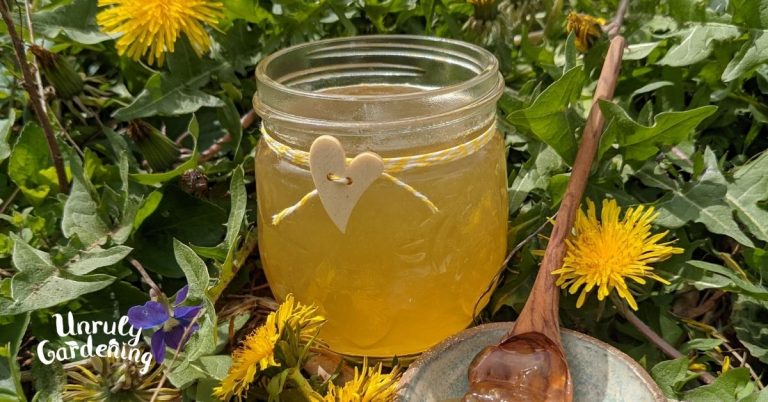
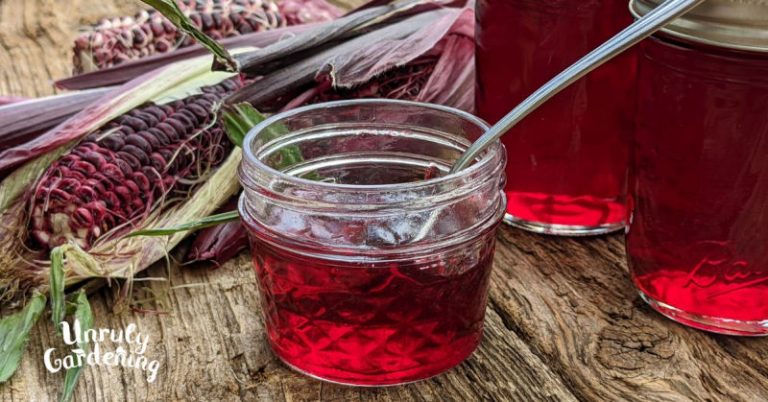
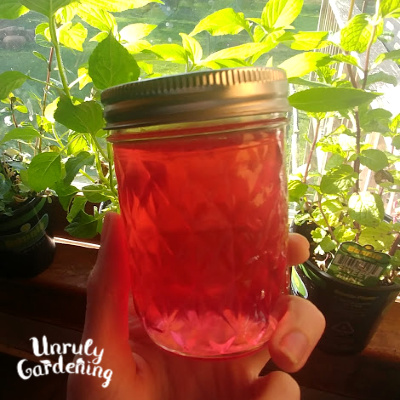
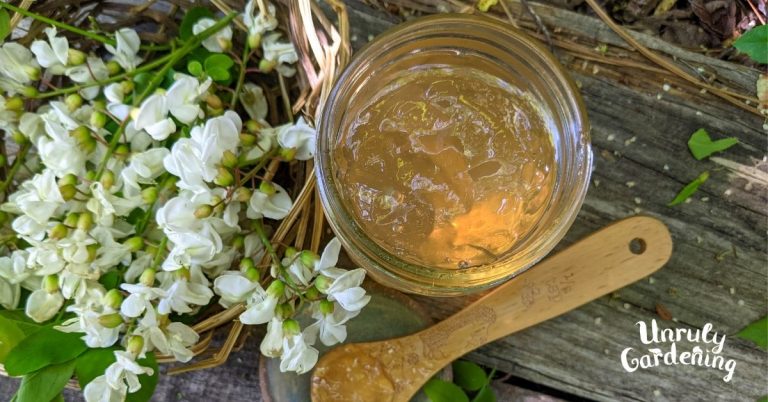
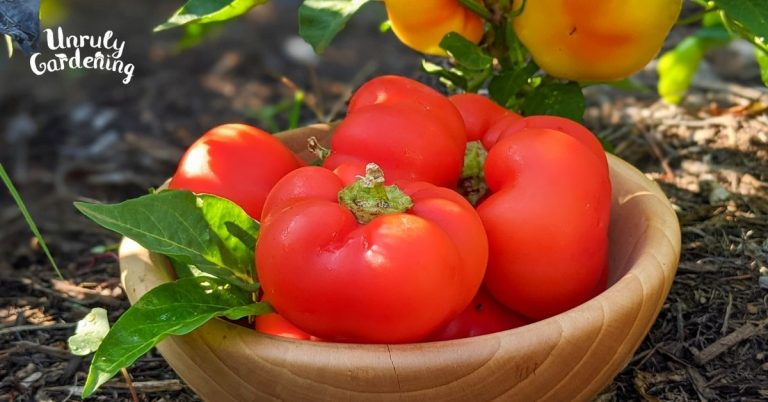
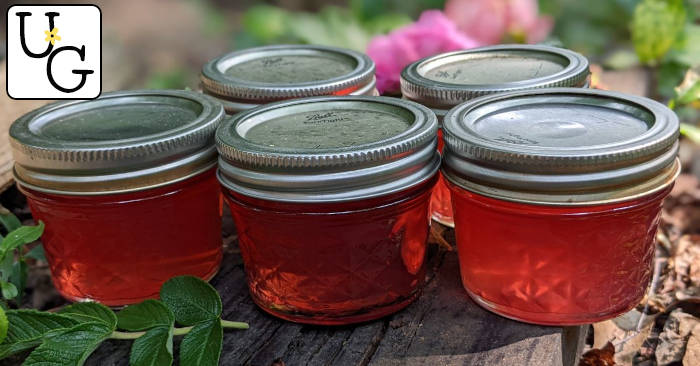
Hello
Thanks for the excellent article on beans.
I am a big fan/admirer of the Unrulygardening. I trust 100% what you write in your posts since you go through so much work and research on this articles.
Many thanks.
Maria
Hi Maria, Thank you so much for the kind words about the article & the site!
I appreciate your support! <3